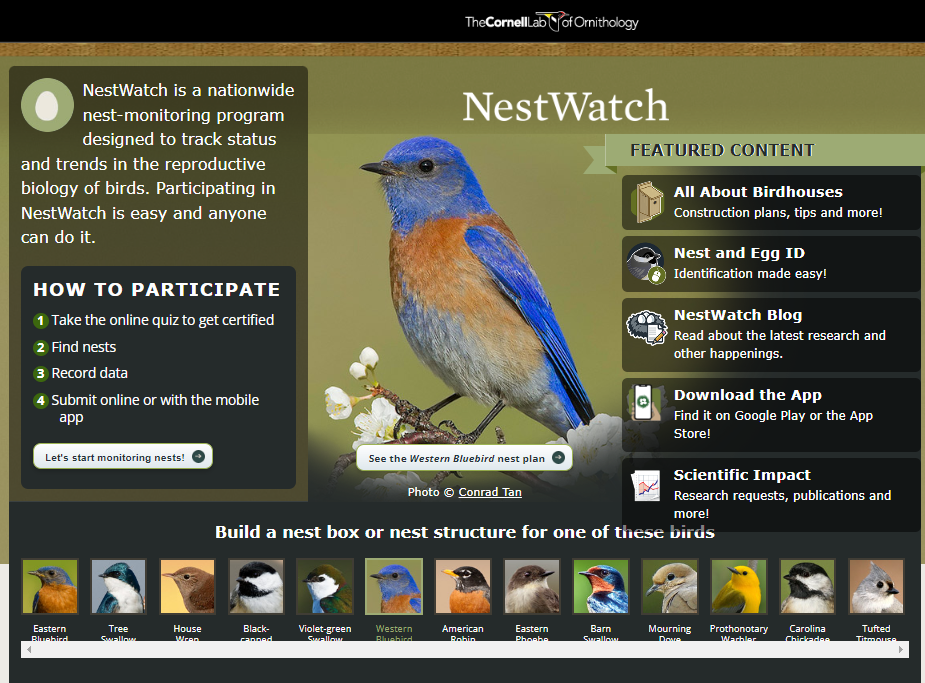Nest Watchers Report on Bluebird Trail
This spring and summer, weekly check-ins on nest boxes gave dedicated volunteers the opportunity to peek into the private lives of birds and track their progress. Wild Birds Unlimited (Frankfort, KY) manages a bluebird trail of 11 nest boxes and about as many volunteers who monitor them around the park.
For Lisa Beran, who considers herself a novice birder, her first year of monitoring the bluebird trail was a way to find community. She shares, “I was looking for more opportunities to increase my knowledge and hang out with others who have similar interests. It’s nice to be around people who enjoy and appreciate the outdoors and the arts.” Volunteer Rhonda Littleton-Roe brought her son Garrett, who captured photos of the nests. “We both really enjoyed monitoring the trails and it was an activity that we could enjoy together.”
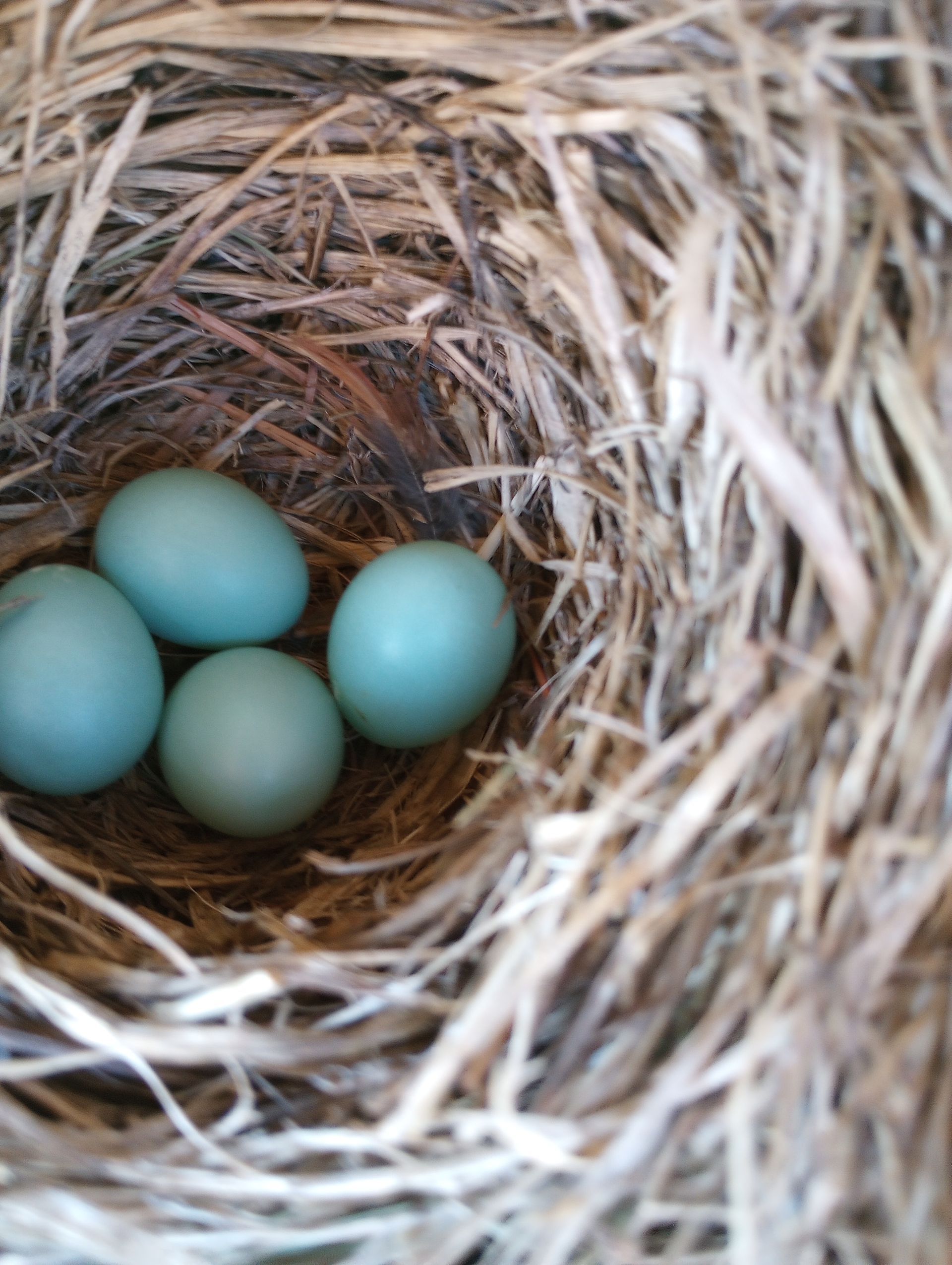
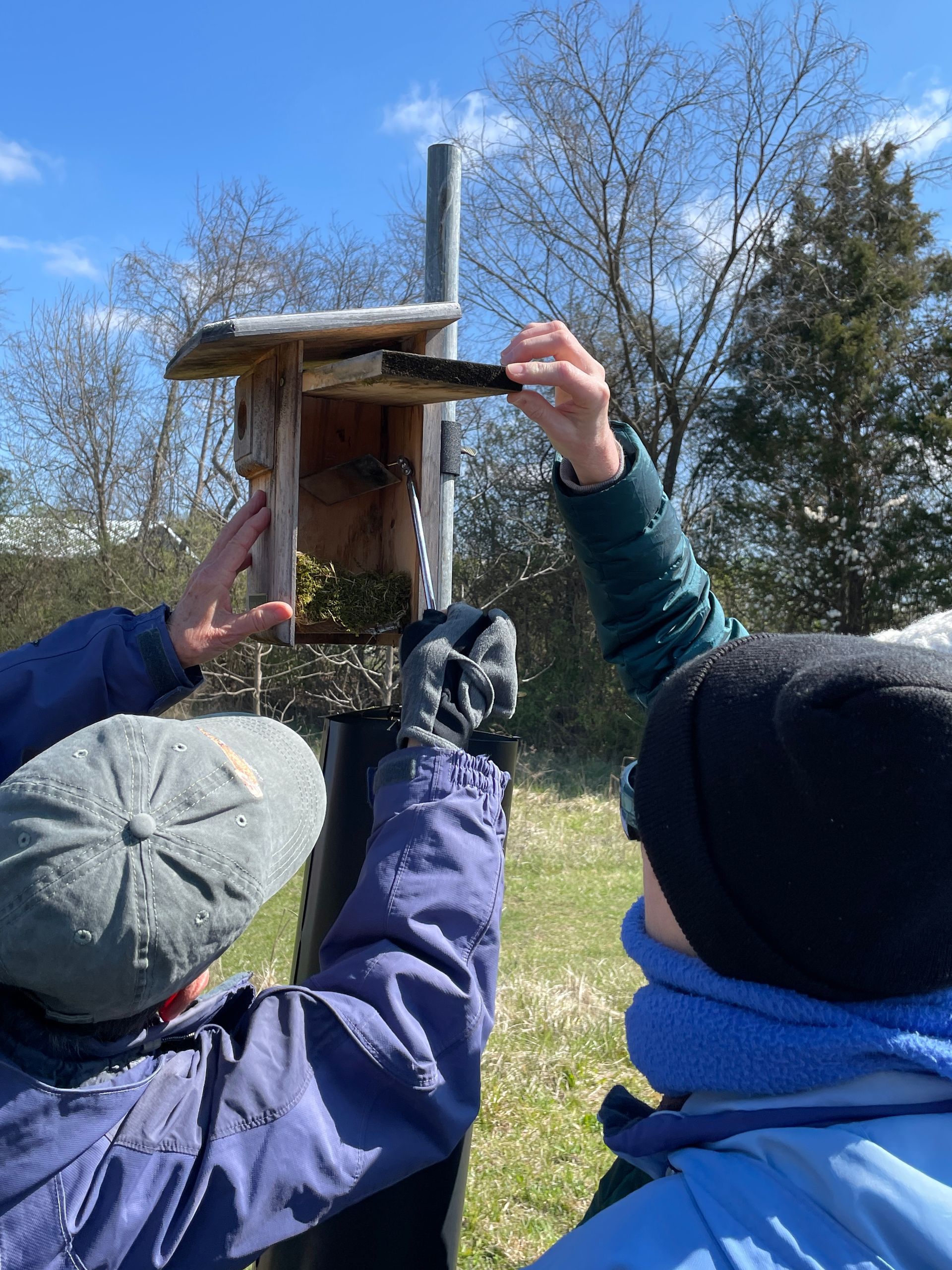
Why Care About Eastern Bluebirds?
The sight of bluebirds in flight around the bluegrass region used to be common. In Kentucky, eastern bluebird populations are in serious decline. Harsher winters, competition for nest boxes with non-native birds, and general loss of habitat have severely impacted this joyful signal of springtime. Since 1978, the North American Bluebird Society has led a continent-wide effort to provide sufficient habitat with nest boxes and bluebird trails.
A bluebird trail is a series of safe nesting habitats for native, cavity-nesting birds, like the eastern bluebird. The bluebird trail at JSP includes 11 nest boxes throughout the park. Other species that used the same boxes this year included tree swallows and chickadees. Titmice, nuthatches, and Carolina and house wrens are also native cavity nesters. These birds might use the same boxes but don’t necessarily compete with bluebirds for space.
Please note it is illegal to remove an active nest of any native cavity nesting bird. They are federally protected under the
Migratory Bird Treat Act.
How Bluebird Trails Help
Helping eastern bluebirds requires understanding their particular needs. During their nesting season, eastern bluebirds feed primarily on ground-level insects. Open, grassy areas, free of pesticides or herbicides with trees nearby for perching are ideal. They avoid densely wooded areas, intensively farmed or urban spaces, according to the North American Bluebird Society. NABS also provides detailed information on how to manage a bluebird trail.
This citizen science program at JSP is one of many bluebird trails throughout Kentucky. Property owners, parks or interested groups can install boxes with support from other bluebirders. For greater impact on the broader habitat conservation efforts, data collected throughout the nesting season is tabulated and reported to
NestWatch.
The Gifts and Surprises of Learning
Consistently visiting the park weekly over about six months brought the life cycle of the birds into sharper focus. While volunteers do not normally handle any eggs or chicks, Lisa called it “almost literally hands-on learning” because she and the other volunteers observed subtle changes from week to week. “It’s amazing how fast they go from being babies to fledging.”
Birders are lucky to find nests in the wild, even luckier to identify the bird who built it. A closer look at a nest provides clues. Bluebirds use only grass, while swallows add feathers - usually white ones from their chest - and chickadees use moss. Lisa reflected on finding tree swallows nests: “They pull out some of their feathers, even out of their wings. Some are iridescent, lining and woven into the nest. We open up the box and see a huge fluff of feathers, with tiny birds.”
Volunteer Betty Barr shared the highlight of her experience: “Each time I monitored, I learned so much from the knowledgeable people with me as well as learning the techniques of approaching each box, carefully opening it and using mirrors and flashlights to see inside. The egg colors, the newly born chicks, the growth and then seeing the fledging made me even more appreciative of the experience and JSP. The nesting boxes are a gift to all of us.”

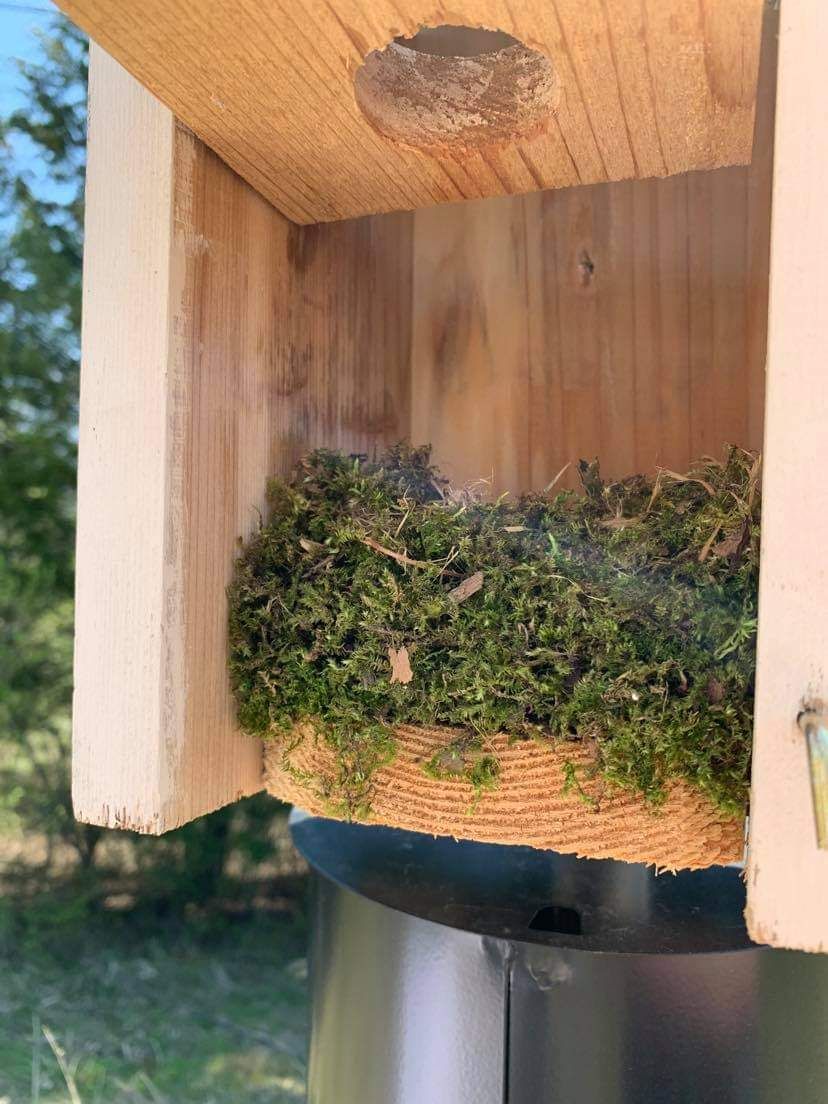
The beauty of the meadows and the progression of different wildflowers in bloom were additional joys that drew the volunteers back. As a side benefit, Lisa became much more familiar with the park. “Doing it every week, I really get to see the art in a different light, different times of the year.” When she later volunteered as a docent at Symphonic Stroll, she confidently provided directions to guests unfamiliar with the meandering paths.
Keeping Count: One Nest Box, Many Births
Viewing nests instilled in Lisa an appreciation for the bird parents' hard work and persistence required to keep the next generation going. Eastern bluebirds may raise up to 4 broods of chicks (nestings) in a season, with up to 6 eggs in a nest. JSP’s most successful nest box this year hosted 3 nestings, for a total of 13 chicks that hatched and fledged
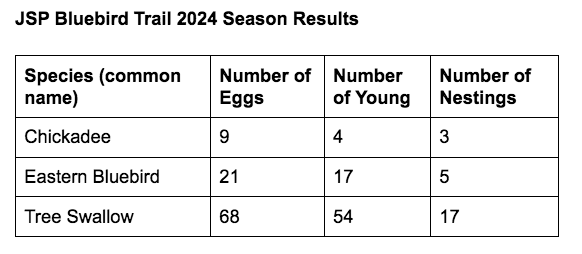
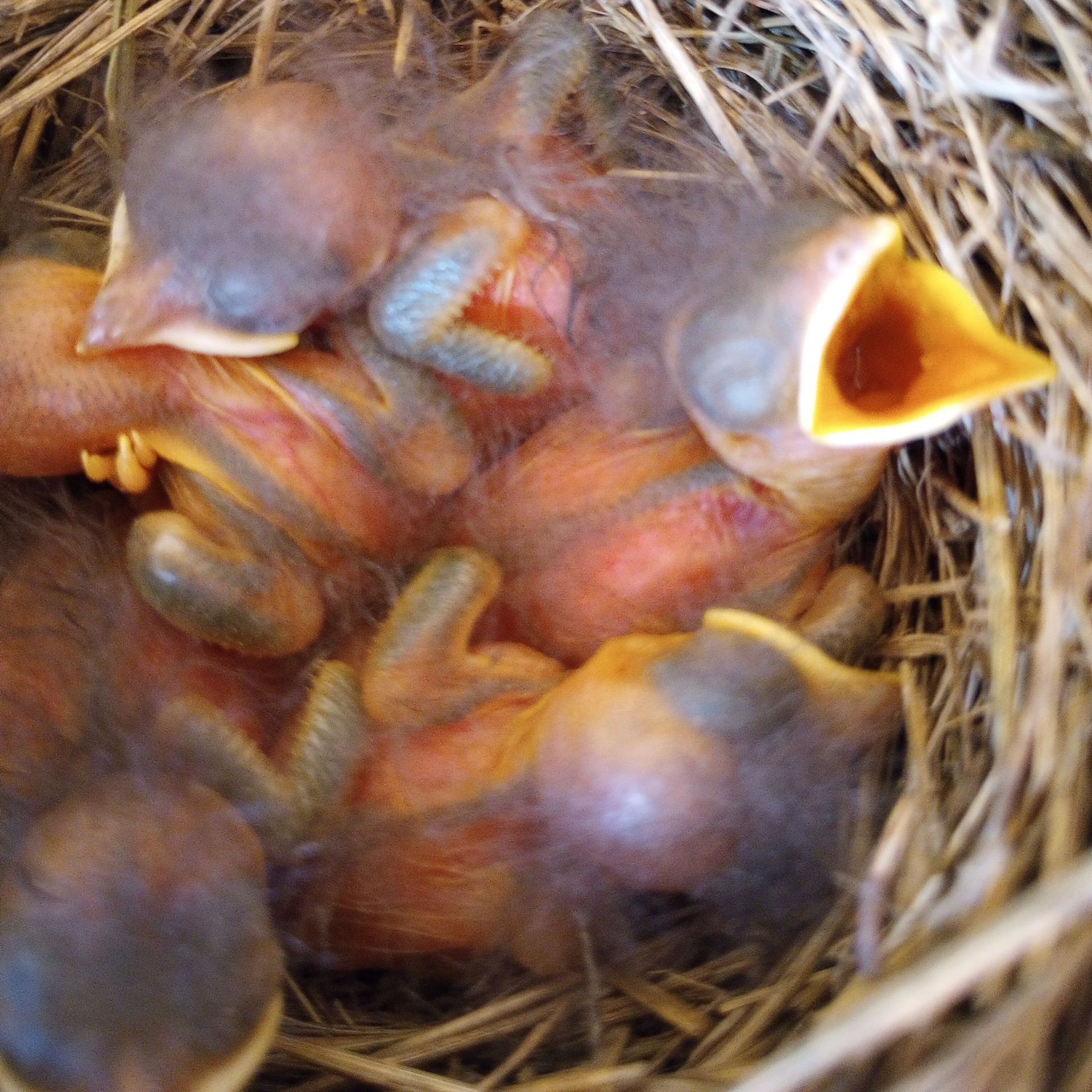
Nest box monitoring goes beyond identification, counting and reporting, to renew the birder’s sense of wonder. Lisa shares the depth of connection it has brought to mind. “Years ago, I worked with midwives. Being present at a birth is an awe-inspiring and intimate experience. In some ways it was like that with the birds, an inside window for what for most of us is out of sight.”
JSP’s mission includes connecting people to nature, and there’s no better way to learn than through up-close-and-personal, hands-on experiences like this. Contact us if you are interested in being trained to monitor the JSP bluebird trail, or to stay informed about habitat conservation volunteer opportunities.
The JSP Bluebird Trail thrives in partnership with Wild Birds Unlimited (Frankfort) and with funding support from Beckham Bird Club of Louisville, Kentucky.
Published October 22, 2024


